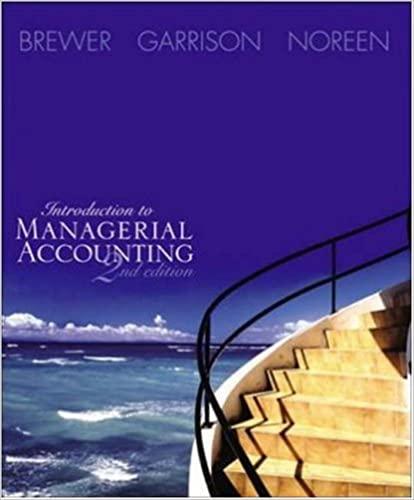Answered step by step
Verified Expert Solution
Question
1 Approved Answer
Problem Two: Refer to the data for problem 10-6B on page 526, except assume that interest is paid semi-annually on January 1 and July 1.
Problem Two:
Refer to the data for problem 10-6B on page 526, except assume that interest is paid semi-annually on January 1 and July 1. Rounding to two decimal places, answer the following instead:
(a) Use Tables 3 & 4, and your knowledge of time value of money, to prove why the bonds were issued at $4,543,626. Then prepare the JE for the issuance on January 1, 2017. If your calculations differ due to rounding, use the $4,543,626 figure for the issuance JE and the subsequent requirements. (Special side note: if interest were paid annually, the textbook figure of $4,543,626 would be incorrect. Assuming annual interest payments, the PV would be $4,536,792! Some of you may want to prove this on your own.)
(b) Assuming the bonds are redeemed at maturity, what is the total amount of interest expense to be recognized over the life of the bonds? Show your work.
(c) Assume the company has an annual accounting period ending the end of February.
1) Prepare the AJE required on February 28, 2017.
2) Prepare the journal entry to record the payment of interest on July 1, 2017.
(d) Ignore (c). Assume the annual accounting period ends on December 31 instead.
1) Prepare the journal entry to record the payment of interest on July 1, 2017.
2) Prepare the AJE required on December 31, 2017
3) Prepare the journal entry to record the payment of interest on January 1, 2018.
4) What is the carrying value of the bonds on January 1, 2018? Show your calculations or marks will be lost.
(e) Assume that after interest is paid on January 1, 2018, the company buys back the bonds. On that date, the market interest rate was 12%.
1) Calculate what the company must pay to redeem the bonds. (Hint: This requires time value of money calculations.)
2) Prepare the journal entry to record the redemption.
3) Using a residual analysis, explain why a gain/loss must be recognized; also explain where on the SOCI the gain/loss would appear.
4) Assume a gain was realised. Assess the immediate impact on the debt/asset ratio. What will be the impact on the interest cover ratio for the financial year ending December 31, 2018 (compared with the previous financial year)?



Step by Step Solution
There are 3 Steps involved in it
Step: 1

Get Instant Access to Expert-Tailored Solutions
See step-by-step solutions with expert insights and AI powered tools for academic success
Step: 2

Step: 3

Ace Your Homework with AI
Get the answers you need in no time with our AI-driven, step-by-step assistance
Get Started


